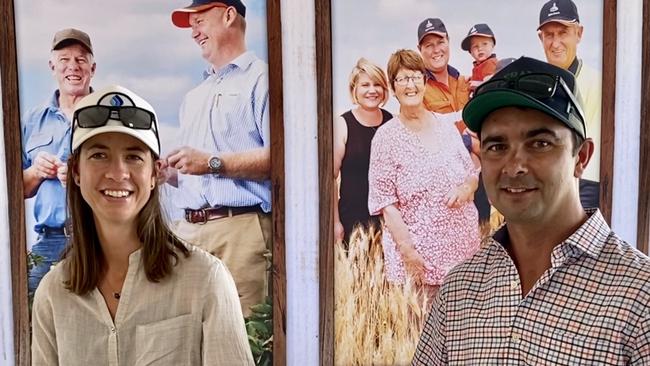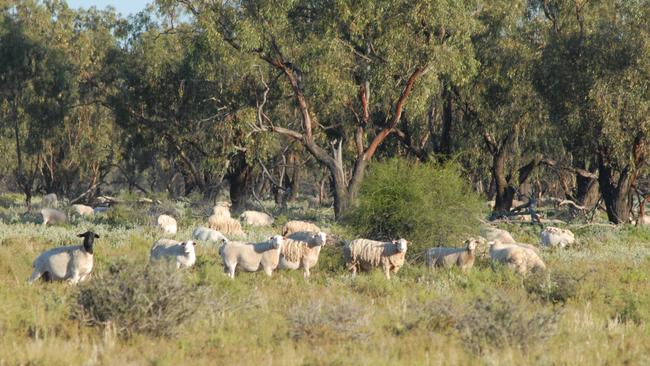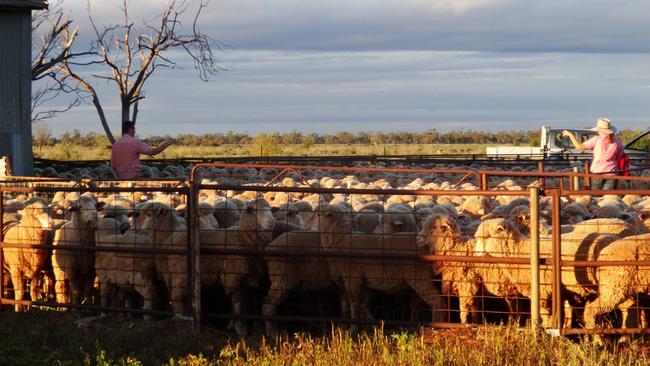Paroo Pastoral: How to futureproof using carbon credits
Spanning seven properties and 397,000ha across two states, Paroo Pastoral’s ambition is driving their growth.
The physical presence of Paroo Pastoral is as large as its ambitions for the future.
Spanning seven properties and two states, this enterprise has a huge 5000 square kilometre footprint upon which sheep, cattle, and Rangeland goats are managed.
But at the heart of the family-run operation is a fledgling project aimed at regenerating a landscape run hard and heavy for years, while also generating a profit.
Part of the Lightforce Group, Paroo Pastoral runs Merino and Dorper sheep, along with a herd of Angus cattle, and goats.
In NSW, Paroo Pastoral spans 396,592ha across 12 pastoral leases run as four main areas in the upper Western, while in South Australia a 1254ha property called Gundooee acts as an improved pasture and finishing block, and Buckleboo is a 101,171ha pastoral lease.
Paroo Pastoral general manager James Wright is based at Adelaide, and spends his time across the South Australian properties working with managers.
James and his wife, Heidi are first-generation producers, and have been working for Heidi’s father Ray Dennis for the past decade.
The first Paroo Pastoral property was bought in 2002. About seven staff members are employed full time, down significantly from the 16 to 17 workers in the past. But James said this was a specific business move, as he elected to run a different model of management structure.
“We had our first child, and my wife Heidi, it’s her family business, so we both moved down and I was more or less in an overseer role,” James said.
“That was when we had a lot of people, a lot of moving parts going here there and everywhere. It wasn’t conducive to family life.”
After about three years, the Wrights moved to South Australia, and James into his current general manager role.
“It has morphed from oversight, to a remote general manager role. It was a good soft start in terms of my role coming into the business, and as we come out of drought, we continued to build some momentum, increased the staff levels, stock levels, maintained low full-time staff on the properties as a bit of a different model.”

LIVESTOCK MIX
When it comes to livestock across the properties, Paroo Pastoral runs about 2000 Angus cattle, 40,000 Dorper breeding ewes, 10,000 Merino ewes, and 10,000 to 15,000 goats, with the aim to move out of goats in coming years.
Carry capacity varies across properties but sits at about 100,000 dry sheep equivalent at the NSW property, 7000 at Buckleboo, and 3500 at Gundooee.
“We have been clients of Collinsville Stud merinos for the last few years. We have been very happy with the rams and the progeny we are getting from them. “
After the drought, James said a large line of Merinos were brought in from Western Australia, which boosted wool quality “dramatically” and brought average micron down to 19-20, compared to previous averages of 22-23 micron.
On the cattle front, about 1500 cows are run at present, a number that fluctuates according to the seasons.
Average rainfall at Gundooee is about 570mm, 320mm at Buckleboo Station, and 250mm at the NSW property.
James said this year has been “below average” in NSW, and has commenced restocking older sheep.
“This has been a difficult decision though, as pricing has been well down,” Jame said.
“The last two years have been exceptional. Above average rainfall and flooding of the Paroo and Darling river systems.”
Buckleboo and Gundooee have had an average season and a consistent good season respectively.

CARBON CORRECTION
But the central focus of James’ attention in recent years has been carbon farming.
When asked to describe Paroo Pastoral’s focus, James surmises it succinctly: “we’re running pastoral leases in conjunction with a carbon project.”
The project is run through the Clean Energy Regulator, who issue one credit representing one tonne of carbon dioxide equivalent stored or avoided by a project.
At Paroo Pastoral, this is achieved by what James calls a human-induced regeneration project.
“These properties have been set stocked for a long time, and suppressed the vegetation in the form of woody weeds and what-not,” James said.
“By removing stock, rotational grazing, changing management practices, that woody vegetation has an opportunity to grow, and that’s what is counted and classified as the carbon project, is vegetation that grows above two metres in height.”
“So it’s just another commodity, and that’s how it’s traded.
“We’ll be certainly looking at trying to sell some of it early, and offset the reduced stocking rate that we’ll have.
“It’s like grain trading, or even premium Wagyu, or prime Angus … the better you tell your story, and the better the quality, the more money you can earn from it.”
The carbon farming project started 3½ years ago, as James and the family looked at ways to diversify the property in times of dry weather.
“At the time we were cutting water, and that was feeling a bit counter-productive,” James said.
After conversations with carbon aggregators, it was “unanimous” that other properties within the Paroo Pastoral portfolio had potential for such a regenerative project.
“Once we got comfortable with the concept in South Australia we registered our project for the NSW pastoral properties as well,” James said.
“We’re seeing in the past 12 to 18 months when we started doing the rotational grazing an amazing response from the country, and really it gives us some great drought resilience as well.”
James said by working regeneratively, resilience was increasingly built into the landscape and the financial operations of Paroo Pastoral.

MOBS ON THE MOVE
“We’re running a mob of 5000 ewes. They get moved every three to four months, and it gives you a good 18 months’ worth of feed up your sleeve,” James said.
“So if you do come into a bit of a dry patch, like what we’re in now where we’ve had limited rain for 12 months, then you know you’ve still got about six months’ worth of feed.
“At the moment, with the market, the quality of the livestock is critical.
“If you’ve got second-rate quality of anything – sheep, cattle or goats – you’re getting absolutely drilled.
“If you’ve got quality lambs … you’re still getting reasonable money.
“It’s not what it was 18 months ago, but it’s still really good in comparison to what you’re going to get for your seconds.”
While the move to the regenerative farming practice will result in a small productivity hit in terms of livestock production, James said it would be compensated for with the income from the carbon project.
“Especially at a time like this where our livestock budgets are almost half what they were when I prepared it six months ago., “ he said.
“It’s only going to be a two to three-year production slowdown, and then we’ll get the rotation happening with a good body of feed, and building up the resilience in the pastures.
“What we have found coming out of the drought is those degraded paddocks took a really long time to bounce back.
“ But when you leave the plants with established rootstock, it will respond very readily to a lot less rainfall.
“All of a sudden, you don’t need 100mm to break the drought. You might only need 50mm.
“And that’s going to start growing some feed and vegetation. So the resilience thing I think is very hard to put a value on.
“But in the long term, I think we’ll probably have more productivity on the livestock side than we’ve ever had, and more consistently.”






